From partying to marrying a commoner, Princess Margaret’s brazen antics forced the British Crown to rethink some of its rules — and paved the way for modern royals to live more freely.
Princess Margaret — the outspoken, fun-loving younger sister of Queen Elizabeth II — was one of the first British royals who dared to go against what was expected of her. Some have gone so far as to dub her a trailblazer who modernized the royal family itself.
Indeed, Princess Margaret (who’s garnered renewed interest thanks to Netflix’s The Crown) broke the mold in almost every way. Until Princess Margaret died, she shirked royal protocol and forced the royal family’s hand in going against tradition to favor her own needs. She set the precedent for how Buckingham Palace handles relationships and scandals to this day.
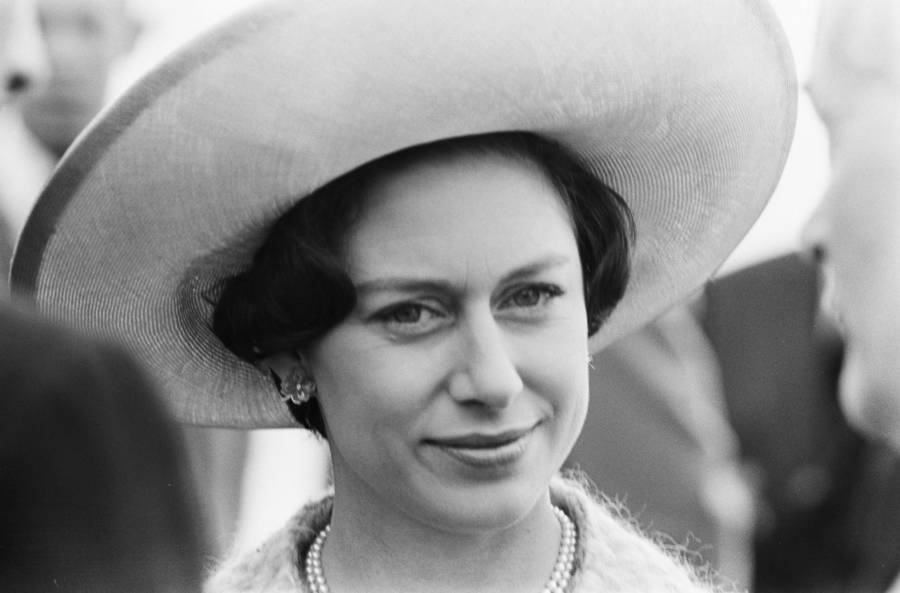
Wikimedia CommonsUp until Princess Margaret died in 2002, the royal shook up the British Crown with her romances, party habits, and vivacious attitude.
But underneath her carefree exterior was pent-up anger, pain, and frustration with her position as a royal living in the shadow of her sister, who was crowned queen at just 25, which has seemingly haunted the Princess throughout her life.
But while Princess Margaret struggled with the pressures of being a royal, her rebellious spirit brought the royal family into the modern era — for better or worse.
Princess Margaret Was Born Into Royal Turmoil
Princess Margaret was a disappointment the moment that she was born on August 21, 1930 — for reasons she simply could not control.
The British public and the royal family were hoping for a male heir to the throne because, at the time of Margaret’s birth, there were none.
Both the public and the royal family would have preferred a prince to a princess but had to settle for Margaret, now the second princess following her older sister, Elizabeth. Nonetheless, Elizabeth became the heir presumptive and Margaret the second in line.
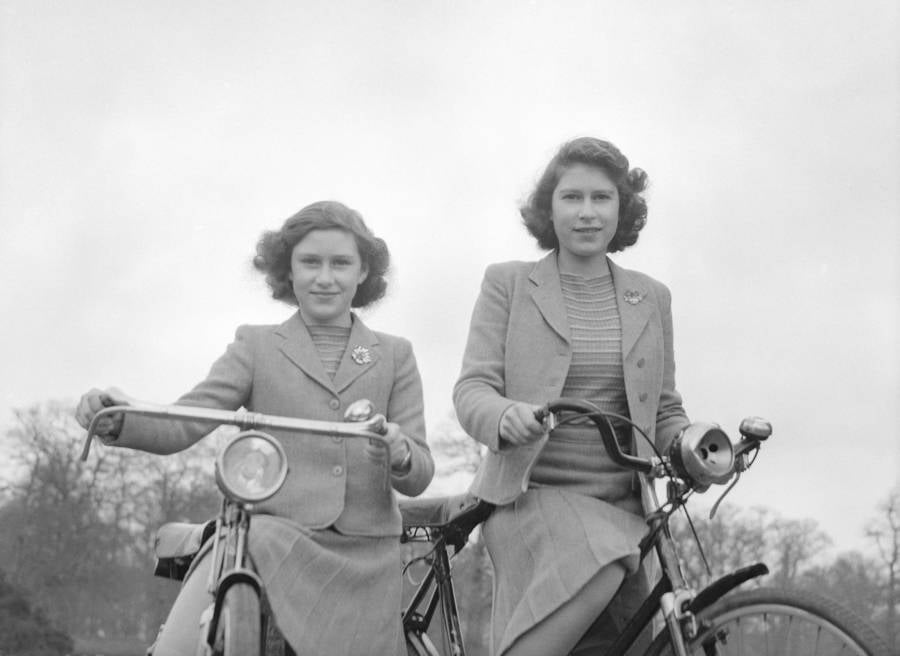
Studio Lisa/Getty ImagesPrincess Elizabeth and a young Princess Margaret in 1942.
The feeling of disappointment in the family heightened after her paternal uncle King Edward VIII abdicated the throne to marry Wallis Simpson — a twice-divorced American socialite.
At the time, it was forbidden for a member of the royal family to marry a divorcée while the ex-spouse was still alive. The fact that Simpson had not one, but two living ex-husbands, was especially scandalous.
The king’s intention to marry Simpson almost caused a major constitutional crisis in England, and Edward was forced to give up his title and all that came along with it in order to follow through with his marriage.
Following the abdication, Prince George VI — Elizabeth and Margaret’s father — unexpectedly ascended to the throne, and in turn, his two daughters became princesses, with Elizabeth becoming the heir apparent to the throne.
Life In The Shadow Of Her Sister’s Crown
At the ages of six and 10 respectively, Princess Margaret and Princess Elizabeth’s lives were effectively changed forever. Most of the public eye was focused on Elizabeth as she became the heir to the British throne overnight.
Elizabeth was to be groomed to become queen and her little sister Margaret was encouraged to play the role of a humbled young princess.
Prior to King Edward’s abdication, neither Elizabeth nor Margaret received a proper education. The two sisters occasionally had lessons on basic subjects — mathematics, reading, writing, and the like — but never anything beyond that.
This all changed for Elizabeth after she became the heir apparent, and she began to educate herself in all subjects necessary to prepare for her future role as Queen of England.
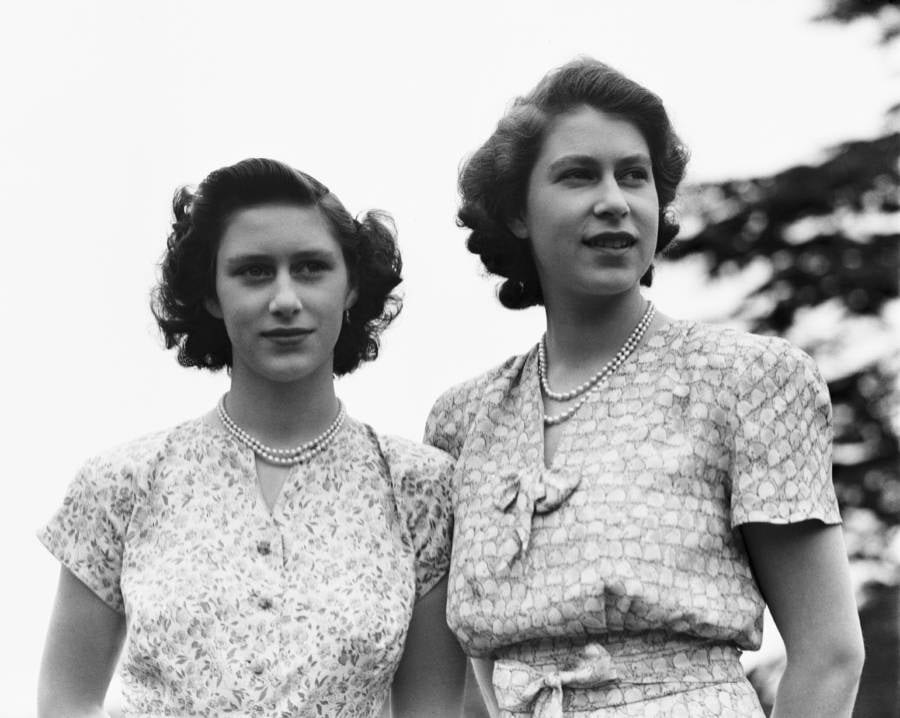
Lisa Sheridan/Hulton Archive/Getty ImagesPrincess Elizabeth and Princess Margaret at the Royal Lodge, Windsor, UK. July 8, 1946.
Princess Margaret was not as fortunate as her older sister because her title didn’t deem her deserving of the same level of education. This exclusion greatly bothered Margaret — and that feeling of exclusion would seem to follow her for the rest of her life. She would later admit to a novelist that she had nightmares of disappointing her sister, or being “disapproved of.”
As the two sisters grew older, the disparity between Princess Elizabeth and Princess Margaret in terms of their roles in society only grew greater. The tension between the princesses came to a head after King George VI suddenly died in 1952, and Elizabeth became Queen on Feb. 6, 1952 at 25 years old.
The shadow that Princess Margaret’s older sister had cast over her for the majority of her life had now officially become a full-blown blackout — one that she seemingly would not recover from.
Rebellion, Romance, And Princess Margaret’s First Love
Long before Prince William and Prince Harry both chose to marry non-royals, or “commoners” as they were called at the time, it was Princess Margaret who made history by becoming the first daughter of a king to marry a commoner in 400 years.
Princess Margaret seemed to take advantage of her role as the less-publicized sister in her romantic life. While Elizabeth was expected to marry young and choose a partner fit for her by royal standards, Margaret was a bit more adventurous with her choice of beau.
Her first relationship was with Group Captain Peter Townshend. The two first met when Margaret was a teenager after her father interviewed him for a position as his equerry.
As she grew older, Princess Margaret became more and more infatuated with Townshend and a romance blossomed. Initially, the royal family turned a blind eye to their affair. Townshend was deemed an unfit partner for the princess. He was 16 years her senior, divorced, and the father of two children.
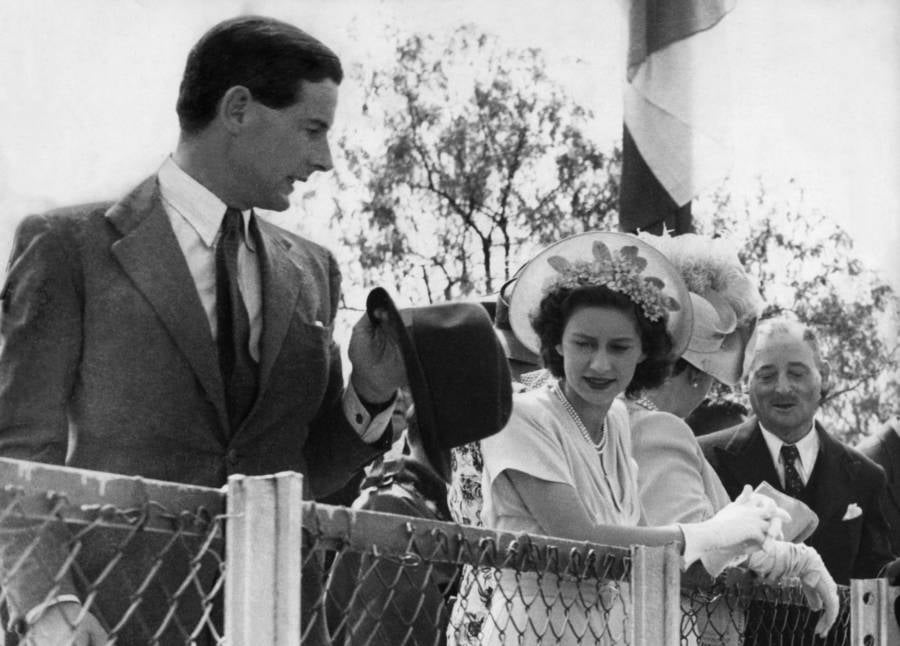
ullstein bild/ullstein bild via Getty ImagesPrincess Margaret and Group Captain Peter Townshend’s relationship was disapproved of by the Crown and they forced to break up.
But Margaret was madly in love and didn’t care what her family or the Church of England had to say about the matter. Peter Townshend seemed to agree, he once wrote that their love “took no heed of wealth and rank and all the otherworldly, conventional barriers which separated us.”
Margaret was determined to marry Peter Townshend. But the Royal Marriages Act of 1772 required that the queen must approve of Princess Margaret’s marriage in order for it to proceed — and only until she reached age 25.
Margaret made it clear to her sister that she and Townshend intended to marry, but the queen requested that they hold off due to her upcoming coronation and subsequent six-month tour of the Commonwealth. She reportedly asked Princess Margaret to wait a year before she would make a decision on the matter.
Unfortunately for Buckingham Palace, a small gesture from Princess Margaret signaled to the rest of the world, which was in the dark about their affair, that she and Townshend were involved. The British media was sent into a frenzy.
At her sister’s coronation in 1953, Margaret flicked a piece of dust off of Townshend’s shoulder, which seemed to imply an intimacy between the two. The tabloids publicized their relationship and the story took the British public by storm.
Princess Margaret Vs. The Queen
Surprisingly enough, the British public largely approved of Princess Margaret’s relationship with Townshend, which created a rift between the public and the royal family as well as the British government. Margaret’s sister, the queen, was stuck in the middle of the sticky situation.
As head of the Church of England, Queen Elizabeth would be required to disallow the marriage on the grounds that marriage is absolutely indissoluble. But the Queen wanted to help her sister and make her happy, so she tried to work around religious and royal tradition to make their union possible.
Townshend was consequently transferred overseas to Brussels where he would wait two years until Margaret turned 25 — an age when she’d be able to marry without the Queen’s direct approval.
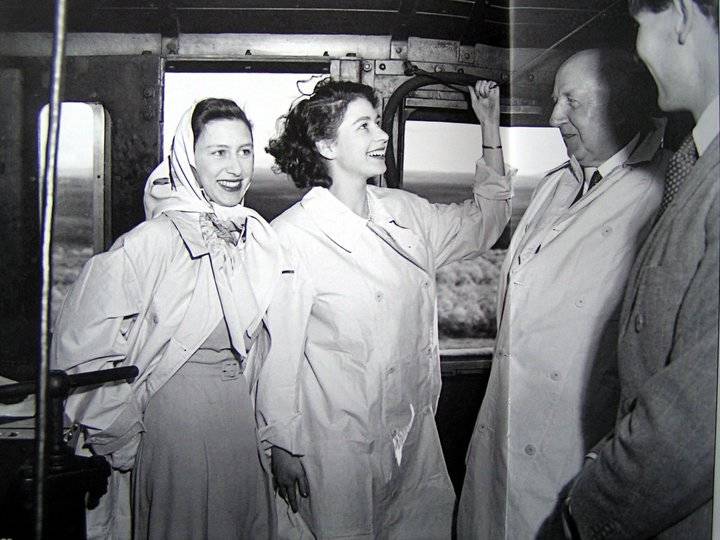
Wikimedia CommonsPrincess Margaret and Queen Elizabeth II during a visit to South Africa.
When Princess Margaret turned 25 in 1955, she and Townshend reunited and were free to marry. But there was a catch — in order to appease Parliament and those that value tradition, Princess Margaret would have to give up her royal title and allowance and leave the country for a minimum of five years in exchange for the marriage.
In 2004, the National Archives released documents that showed how the Queen and the prime minister at the time, Anthony Eden, worked together to try to give Margaret what she wanted. They drafted a plan in which Princess Margaret would be able to keep her title and civil list allowance, but would have to give up her place and her future children’s place in the royal line of succession.
In the end, Margaret chose not to marry Peter Townshend. In a statement, the princess announced her decision to the public:
“I would like it to be known that I have decided not to marry Group Capt. Peter Townsend. Mindful of the Church’s teaching that Christian marriage is indissoluble and conscious of my duty to the Commonwealth, I have resolved to put these considerations before any others.”
Although the Prime Minister was seemingly on her side, there were still some members of Parliament who were extremely against the marriage.

Wikimedia CommonsPrincess Margaret and Princess Elizabeth are featured on a South African stamp from 1947.
Townshend mused in his 1978 autobiography, Time and Chance, that he was not enough to Margaret in the face of her prestige as a royal. “She could have married me only if she had been prepared to give up everything — her position, her prestige, her privy purse,” Townshend wrote. “I simply hadn’t the weight, I knew it, to counterbalance all she would have lost.”
And with that, Princess Margaret became a victim of the outdated laws of the British monarchy in the eyes of her public.
Princess Margaret And Anthony Armstrong-Jones
After the marriage was rejected, Townshend returned to Brussels in order to start a new life. Although the decision was ultimately hers to make, the pain of losing the love clearly affected Margaret in the most profound of ways.
Faced with the social pressure to find a husband, Princess Margaret decided to get engaged to Billy Wallace — a family friend she had known for years. He was also generally considered a good fit for a princess.
However, Wallace was confident that the engagement was set in stone and went on a holiday to the Bahamas where he had a brief affair. He told Princess Margaret about what happened, and to his surprise, she immediately broke off the engagement.

Express Newspapers/Getty ImagesPrincess Margaret greets the Beatles in 1964.
Margaret made the rounds in her various social circles following her heartbreaks. Her reputation as a wild child only intensified. She often partied into the early hours of the morning, drank frequently, smoked heavily, and all this very much in the eye of the public.
Margaret also was known for her extravagant routines. Into her mid-20s, the princess began her days with breakfast in bed accompanied by a “vodka pick-me-up” and a luxurious bath. These were later followed by four-course lunches.
That rebellious spirit brought her into the arms of Antony “Tony” Armstrong-Jones, a bohemian celebrity photographer who would become her first and only husband. It’s not known exactly when they met, but the Netflix TV show The Crown shows that Margaret met him at a dinner party.

Hulton Archive/Getty ImagesPrincess Margaret on her way to Westminster Abbey to marry Antony Armstrong-Jones, May 6, 1960.
The artist and motorcycle enthusiast intrigued Margaret. It is said that he treated her just as he would anyone else, despite the fact that Margaret was a royal, and filled her thirst for rebellion. The two kept their relationship secret until they announced their engagement.
This came but a year after the news that Peter Townshend was engaged to be married to a 19-year-old Belgian girl broke. The engagement came around Christmas. Margaret was reportedly determined to show the public that she was no longer in love with Townshend and that she’d moved on with her life.
Their engagement was formally announced to the public in February 1960 following the birth of the Queen’s second son and third child, Prince Andrew. On May 6, 1960, Princess Margaret and Armstrong-Jones became husband and wife at Westminster Abbey, in the first televised royal wedding in history.
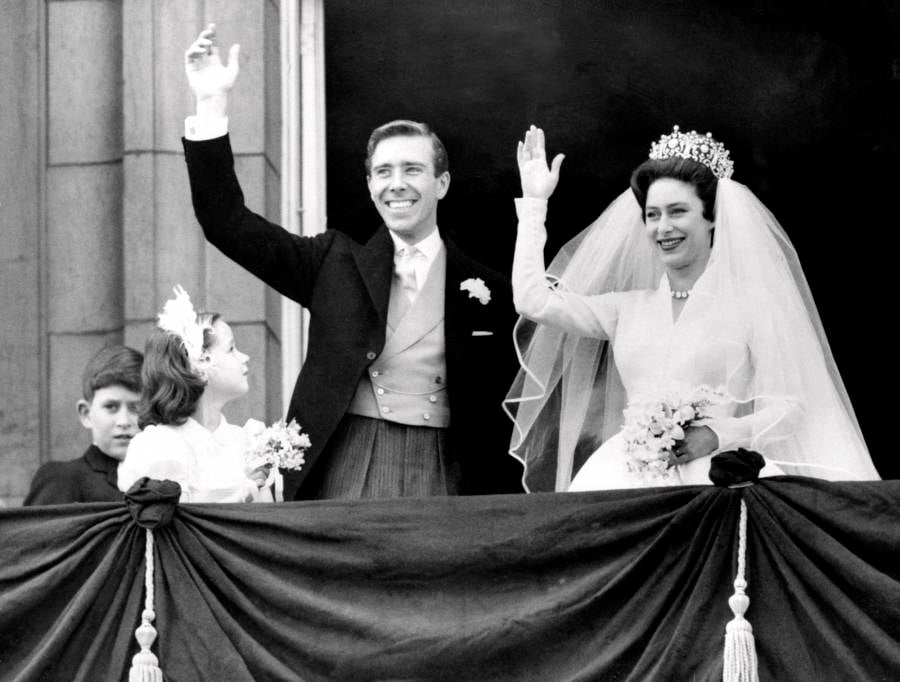
/AFP/Getty ImagesPrincess Margaret and her husband, the photographer Antony Armstrong-Jones, at Buckingham Palace in London on their wedding day.
The wedding was as extravagant as a royal wedding gets and cost the British public more than $113,000.
The Marriage Deteriorates
The couple honeymooned expensively on a six-week Caribbean cruise aboard the royal yacht Britannia. Armstrong-Jones became the Earl of Snowdon in 1961 and the couple moved into apartments in Kensington Palace. Not long after their marriage, their first son David was born, and their daughter Sarah came three years later in 1964.
Apart from producing their children, the princess and the earl were perhaps the most popular couple in all of London. They attended high society events and enjoyed their popularity together.
But the two also had a tumultuous marriage as equally headstrong individuals. Armstrong-Jones continued to engage in sexual relationships with other women, namely the actresses Jacqui Chan and Gina Ward, and Margaret had indiscretions of her own.

PA Images via Getty ImagesPrincess Margaret and Lord Snowdon had two children together, David and Sarah.
Rumors of their extramarital affairs spread like wildfire. Margaret was reportedly romantically linked to her daughter’s godfather Anthony Barton and notable celebrities such as Mick Jagger and Peter Sellers.
But it was her relationship with Roddy Llewellyn that hit the nail in the coffin that was Princess Margaret’s marriage. Llewellyn was 17 years younger than Margaret. They were introduced in 1973 and the following year, the Princess invited Llewellyn to her vacation home on the private tropical island of Mustique.
In 1976, a photo of Margaret and Llewellyn was published on the front page of News of the World and the public made the Princess out to be an unsavory sort of cougar.
It was after this picture was published that the Princess and the earl publicly acknowledged that their marriage had been falling apart and announced their separation. On July 11, 1978, Princess Margaret’s divorce was finalized — and it was the first time a British royal had divorced since King Henry VIII in the 16th century.
Princess Margaret’s Death At 71
Princess Margaret never remarried, and her later years were no easier than those in her raucous youth. Until Princess Margaret died, she suffered from a variety health complications.
Margaret was a lifelong smoker, beginning at the age of 15, and which caught up with her in 1985 when the she underwent surgery that required part of her left lung be removed.
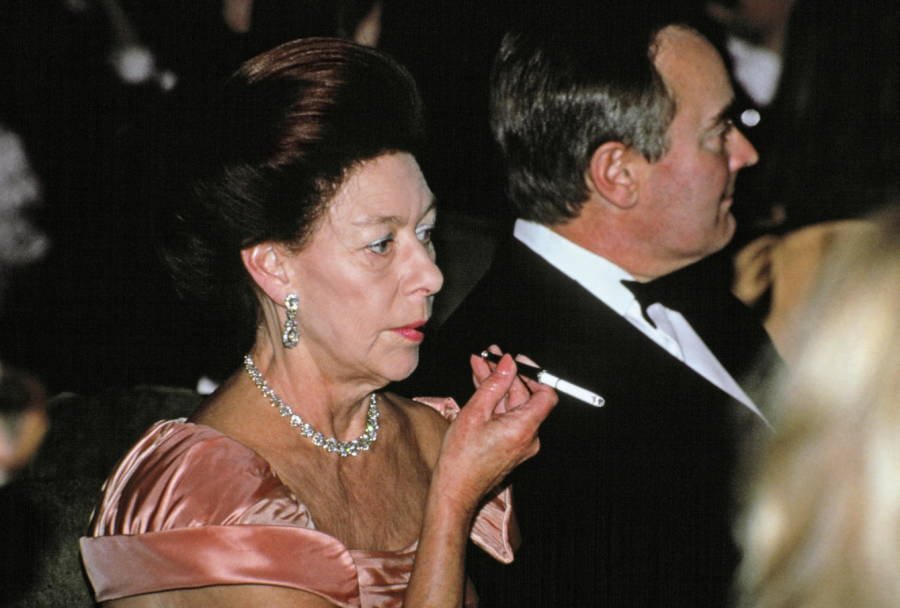
Tim Graham/Getty ImagesPrincess Margaret died of cardiac arrest years after receiving lung surgery. Here she is smoking at a gala for the Aids Crisis Trust.
Though she quit smoking in 1991, she continued to drink heavily, and in 1998, suffered from a mild stroke. Princess Margaret died on Feb. 9, 2002, after a stroke caused her to go into cardiac arrest.
The legacy that Princess Margaret left behind after her passing is truly iconic. She was a royal rebel — indeed, the royal rebel, and a trailblazer for what the British monarchy looks like today. If it weren’t for her efforts, the world would have never seen the likes of Kate Middleton and Meghan Markle married into British royalty.
Prince Harry and Prince William, as well as any future royal family member, can thank Princess Margaret for making the modern, more tolerant lives that they now lead within the royal family possible.
After this look at the wild life and death of Princess Margaret, brush up on your knowledge of the British royal family’s lineage. Then, read about Charles the Mad, one of the worst kings in history.





